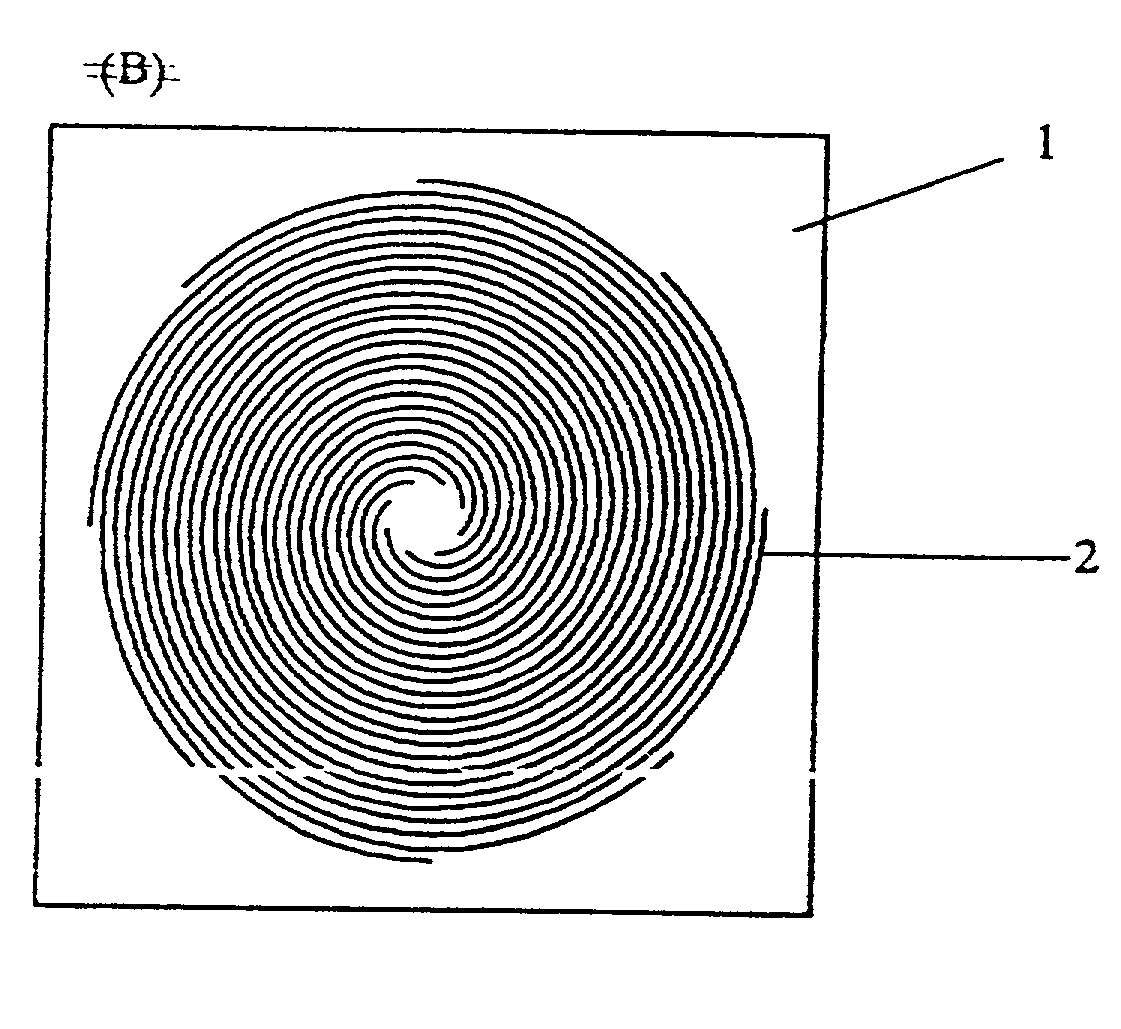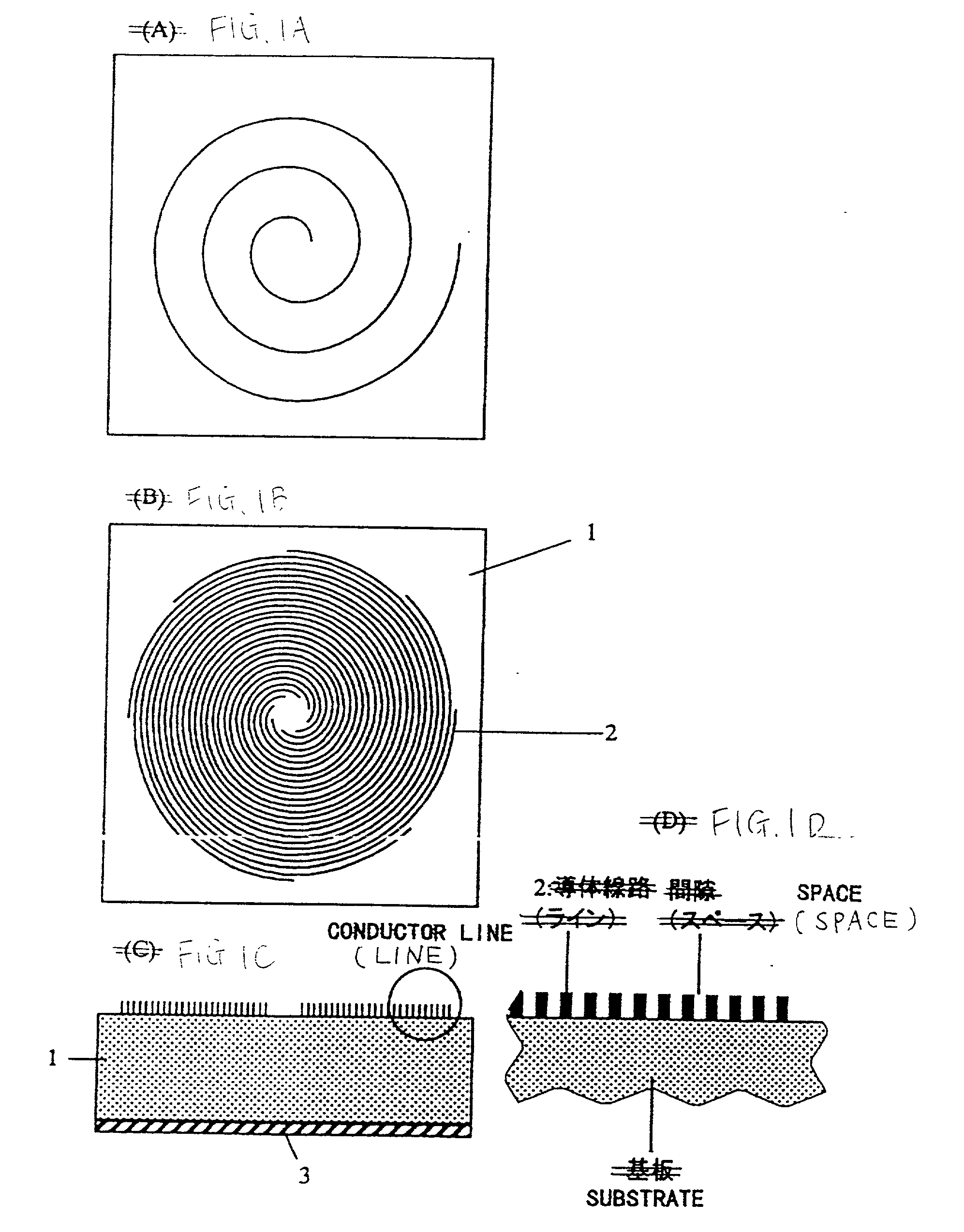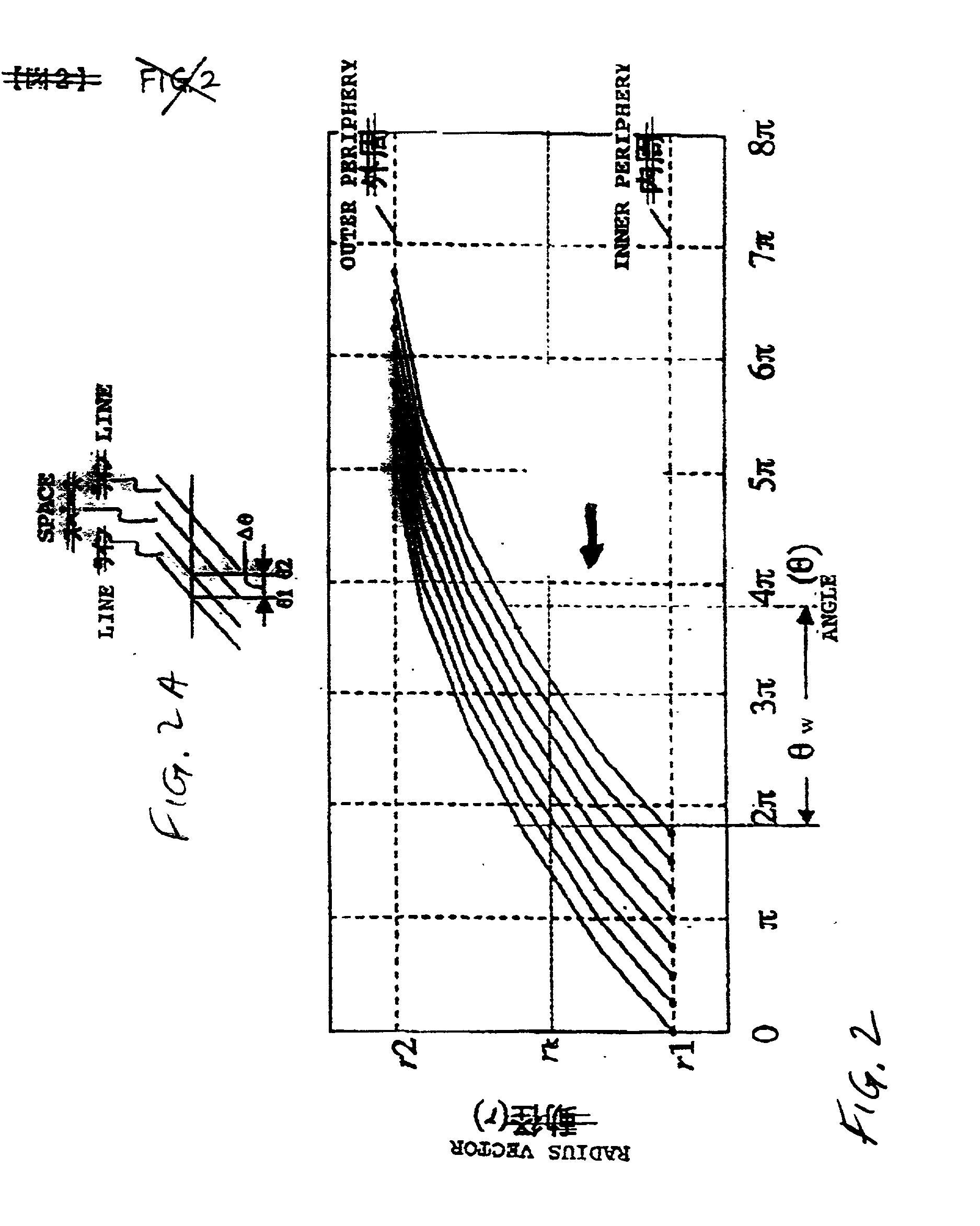Resonator, filter, duplexer, and communication device
a communication device and filter technology, applied in the direction of resonators, superconductors/hyperconductors, electrical devices, etc., can solve the problems of power loss due to edge effects inescapable, and the character of resonators is inevitably subject to deterioration
- Summary
- Abstract
- Description
- Claims
- Application Information
AI Technical Summary
Benefits of technology
Problems solved by technology
Method used
Image
Examples
first embodiment
[0046] Next, the configuration of the resonator in accordance with the present invention will be described with reference to FIGS. 5A-6A.
[0047] FIG. 5A is a top view of the resonator, FIG. 5B is a central vertical section, and FIGS. 5C and 5D are plan views of two line patterns. A ground electrode 3 is formed over the entire bottom surface of a dielectric substrate 1, and a plurality of spiral line patterns 21 are formed on the top surface. FIG. 5C is an example of the spiral line patterns, and a plurality of mutually congruent spiral lines 2 each of which has open ends at both ends, are arranged on the top surface of the dielectric substrate so as not to intersect one another in a manner such that first and second ends of each of the lines are rotation-symmetrically positioned around a predetermined point (the center point) on the substrate.
[0048] In FIG. 5B, reference numeral 5 denotes an insulating layer, and on the top surface thereof, a line pattern 22 different from the above-...
second embodiment
[0060] Next, the configuration of the resonator in accordance with the present invention will be described with reference to FIGS. 7A to 7D. FIG. 7A is a top view of the resonator, FIG. 7B is a central vertical section, and FIGS. 7C and 7D are plan views of two line patterns. A ground electrode 3 is formed over the entire bottom surface of a dielectric substrate 1, and on the top surface thereof, a multiple spiral line is formed of a line pattern 21 constituted of a plurality of spiral lines, as shown in FIG. 7C. This line pattern 21 is similar to the one shown in FIGS. 5A to 5D. In FIG. 7B, reference numeral 5 denotes an insulating layer, and a line pattern 23 is formed on the top surface of this insulating layer. FIG. 7D shows an example of this line pattern 23. Herein, first ends and second ends of a plurality of lines are each arranged substantially at inner and outer periphery portions around the same center point as the multiple spiral line formed of line pattern 21, and each ...
fourth embodiment
[0069] FIGS. 10A to 10D are views illustrating the configuration of a resonator in accordance with the present invention. FIG. 10A is a top view of this resonator, FIG. 10B is a central vertical section thereof. In this example, multiple spiral patterns 21a, 23a, 21b, and 23b are successively laminated on the top surface of the dielectric substrate 1 with an insulating layer interposed therebetween. Of these four line patterns, 21a and 21b are left-handed spiral lines, as shown in FIG. 10C. On the other hand, 23a and 23b are right-handed spiral lines, as shown in FIG. 10C. If we consider the two layered multiple spiral lines shown in FIGS. 7A to 7D as one set, the above-described structure will equal two sets of these two layered multiple spiral lines. Such a multilayer lamination allows the storage amount of electric field energy to further enhanced, and enables magnetic field energy to be kept at a low loss. This results in a more increased Q value.
PUM
 Login to View More
Login to View More Abstract
Description
Claims
Application Information
 Login to View More
Login to View More - R&D
- Intellectual Property
- Life Sciences
- Materials
- Tech Scout
- Unparalleled Data Quality
- Higher Quality Content
- 60% Fewer Hallucinations
Browse by: Latest US Patents, China's latest patents, Technical Efficacy Thesaurus, Application Domain, Technology Topic, Popular Technical Reports.
© 2025 PatSnap. All rights reserved.Legal|Privacy policy|Modern Slavery Act Transparency Statement|Sitemap|About US| Contact US: help@patsnap.com



